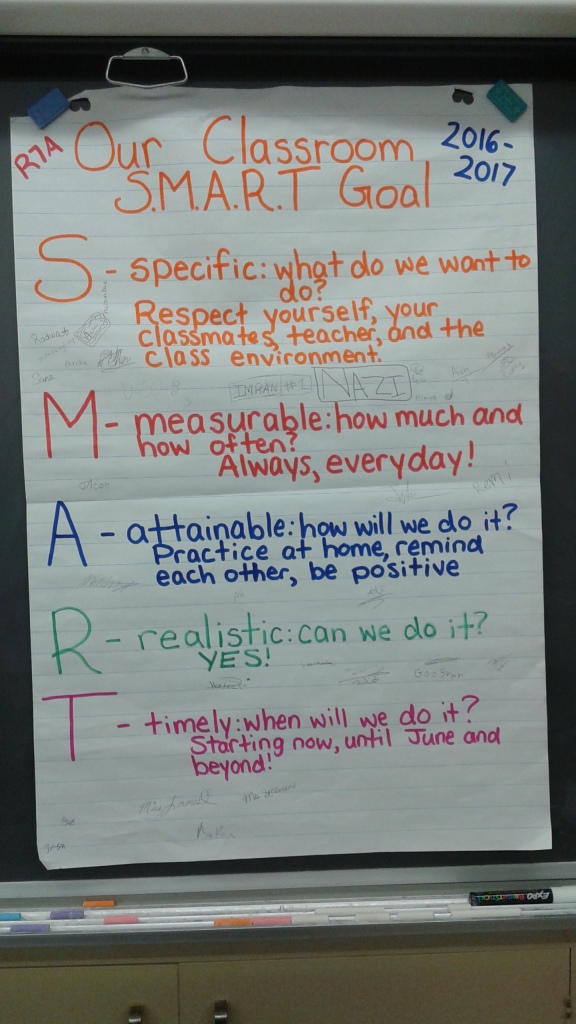In my practicum this year, I had the opportunity to teach health to my grade 7 homeroom class once a week. One week, my associate teacher introduced the idea of SMART goals to the class, and the students were to create one goal related to healthy eating and one to physical activity.
The acronym SMART stands for the following:
S- specific: what do you want to do?
M- measurable: how much and how often?
A- attainable: how will we do it?
R- realistic: can we do it?
T- timely: when will we do it?
For example, a student might want to eat more fruits and vegetables instead of junk food. Their goal might look like this:
S- I want to eat more fruits and vegetables instead of junk food.
M- I will eat fruit after every meal instead of dessert, as well as at snack time everyday. Also, I will eat more leafy green vegetable such as spinach and kale dinner three times a week.
A- I will go grocery shopping with my parents and help pick out more fruits and vegetables instead of junk food and sweets.
R- I believe I can achieve this goal because I have talked to my parents and they agree to buying more fruits and vegetables instead of unhealthy foods.
T- I will start on Monday (after grocery shopping on the weekend).
The idea of SMART goals introduced the students to the idea of goal-setting in general. As the students were working on the assignment, some asked if they could make ones for the school year and for activities in their personal lives, and of course my answer was yes! Goal-setting is an important skill, and introduced at a young age it allows students to plan what they want to accomplish realistically.
As I spent more time in the classroom teaching, I noticed that there was a lot of negativity in the room. Students would complain about assignments, homework, subjects, who they were working with, and even talk back to each other- definitely not a positive place to be. I decided to take SMART goal-setting one step further. I asked the students what they thought was important to create a positive and inclusive classroom environment. Among their responses was a common theme: respect. Using what I had learned as a camp counsellor that summer, I transferred the idea of the four different types of respect (yourself, each other, the facilities, and the environment) to the classroom setting, and the class contract below was made! All the students signed, we had it laminated, and every time I return to volunteer, I see it up in the classroom. And maybe it was the students getting to know each other better, or maybe it was our collective agreement, but I’ve noticed students working together better and heard less complaining since then.

I took away from this experience a portion of my teaching philosophy: I believe that the underlying tenet in classrooms should be respect- for yourself, each other, teachers, and the classroom (and, by extension, the school as a whole). While this may seem like a no-brainer, it actually comes up more often than you might think. If something like this is done at the beginning of the school year, coupled with modelling and maybe even skits, it can then be referred to at times of negativity or conflict. A simple reminder that a student is not respecting another when they complain of having to work together can bring the student back to the goal they agreed to and may change their thinking. Of course, it won’t solve all classroom problems, but it is a good (and, might I add, specific, attainable, and realistic) place to start.
